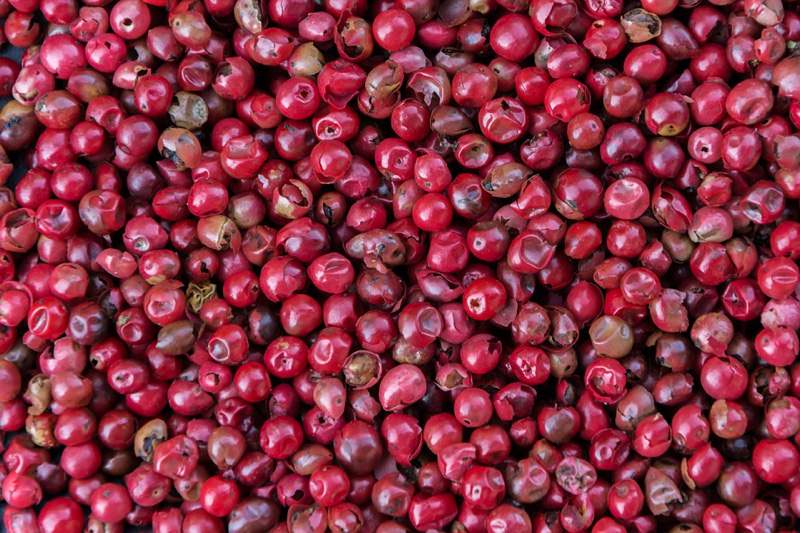Black, white, green, pink, long, Szechuan, and more!
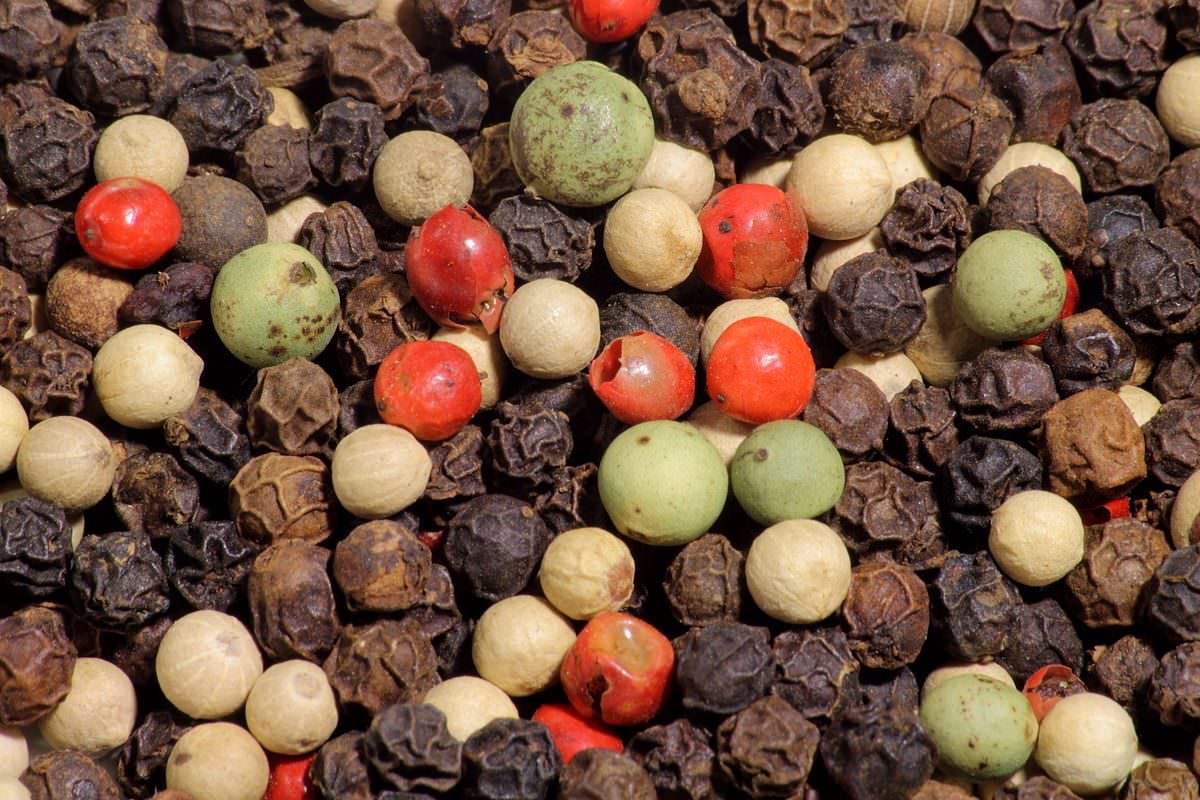
[mf_h2 align=”left” transform=”uppercase”]First, a little background[/mf_h2]
Peppercorn, in its various forms, is the world’s most traded spice. It was once even used in its native South and Southeast Asia as currency. It is not in any way related to the New World’s many varieties of chili pepper, though it does have a sort of spiciness that comes from a totally different compound than what you’d find in a chili.
While there are a whole bunch of different products referred to as pepper or peppercorns, only a few of them are technically peppercorns. True peppercorns come from the Piper nigrum plant, a lush, tropical-looking vine that produces long strands of small fruits. Each fruit – technically a drupe, sort of like the individual segments of a raspberry or blackberry – contains one seed. Peppercorn was not, as a common myth goes, used either as a preservative or to disguise the flavor of spoiled meat in antiquity; it’s not a very good preservative, and it was too expensive to waste on spoiled meat. (Besides, people knew even then that eating spoiled meat was dangerous.) Instead it’s likely always simply been a prized flavoring, loved for its bite and punch.
Now let’s get into the different types!
[mf_h2 align=”left” transform=”uppercase”]Black Peppercorn[/mf_h2]
The most common preparation of pepper, black peppercorn is created by taking all those tiny fruits while still unripe and green and quickly cooking them, often by boiling. The heat releases enzymes that discolor the fruit, turning it a kind of deep brown color which is deepened further through the next process, drying. Drying can be done either mechanically or by the sun, and basically disintegrates the pulp of the fruit, wrinkling and cementing the skin to the seed within.
This preparation is by far the most popular way to treat the fruit, showing up in cuisines from China to Vietnam to Western Europe.
[mf_h2 align=”left” transform=”uppercase”]Tellicherry Black Peppercorn[/mf_h2]
You might see this one at fancy spice markets or name-checked at restaurants. The Tellicherry black peppercorn doesn’t refer to quality or place of origin, but instead to size: Tellicherry peppercorns are larger than regular black peppercorns, and the size difference affects flavor – Tellicherry peppercorns are renowned for being less spicy but more complex, with distinct citrus notes.
[mf_h2 align=”left” transform=”uppercase”]White Peppercorn[/mf_h2]
White peppercorn is created by removing the skin and the pulp from the fruit and using only the seed. Usually, this is done by submerging the fruit in water for a few days, after which it swells and separates from the seed. White peppercorn is spicier but less fruity than black, and it’s commonly used in Chinese cuisine (or if you’re cooking something white, like mashed potatoes, and don’t want to see flecks of black in there).
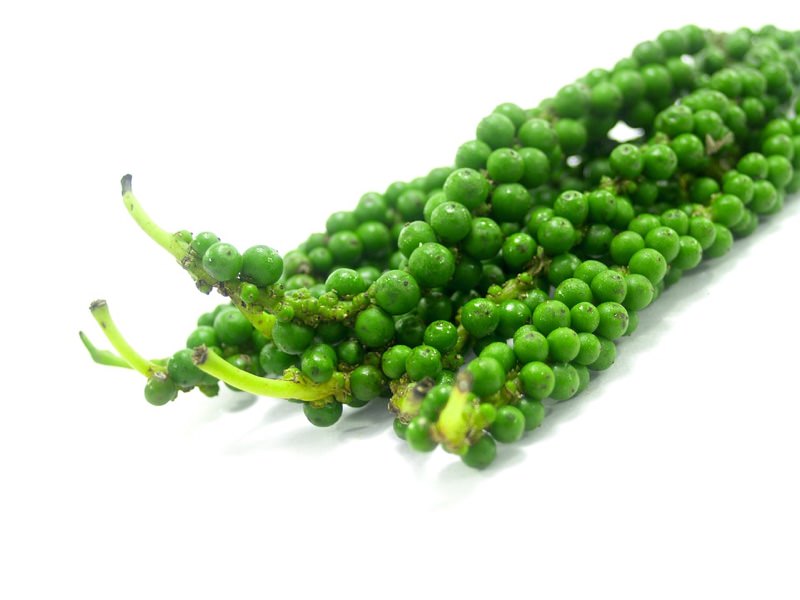
Antioxidant Aromatic Black Bell Pepper Black Pepper
[mf_h2 align=”left” transform=”uppercase”]Green Peppercorn[/mf_h2]
The last of the true peppercorns, green peppercorns can show up in one of two forms. One is treated basically like black peppercorns, but with a chemical added to preserve their natural green color, like sulfur dioxide. (This is the same chemical that keeps golden raisins golden.) When dried, they sometimes have a milder flavor than black, but not necessarily.
The second type of green peppercorn is more rare and more expensive, either sold completely fresh right off the vine (unusual, because the fruit decomposes quickly) or preserved in a brine. If preserved, they still have that bright spiciness, but are also acidic thanks to the preserving process, and are most commonly seen in Thai cuisine.
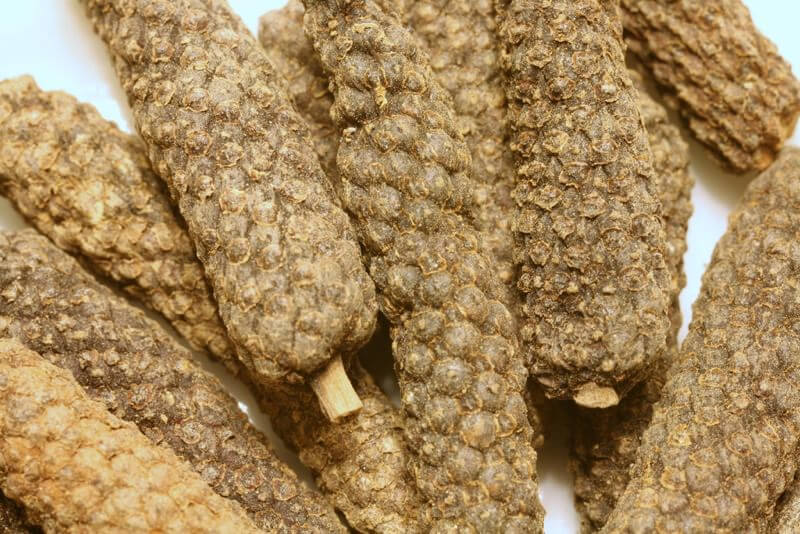
Charles Haynes on Flickr
[mf_h2 align=”left” transform=”uppercase”]Long Pepper[/mf_h2]
Not exactly a peppercorn, but closely related to Piper nigrum, the long pepper comes from these oblong spikes on the end of the plant that are covered by tiny fruits. It looks sort of like the tip of a strand of wheat. Native to Indonesia, long pepper is sort of a pain to grow, at least compared with peppercorns, but has an even spicier, more complex flavor. Typically you’ll find the entire spike dried, though they’re pretty expensive.
[mf_h2 align=”left” transform=”uppercase”]Pink Peppercorn[/mf_h2]
Lies! The pink peppercorn is not a peppercorn at all. It comes from a South American evergreen tree in the cashew family, which produces small pink fruits. These fruits are dried, but unlike black peppercorns, they’re not usually cooked first and therefore retain their nice, pink color. They have a slightly fruity flavor, not as intense a heat as true peppercorns, and are physically much more delicate. Owing to its membership in the cashew family, people with nut allergies should avoid the pink peppercorn.
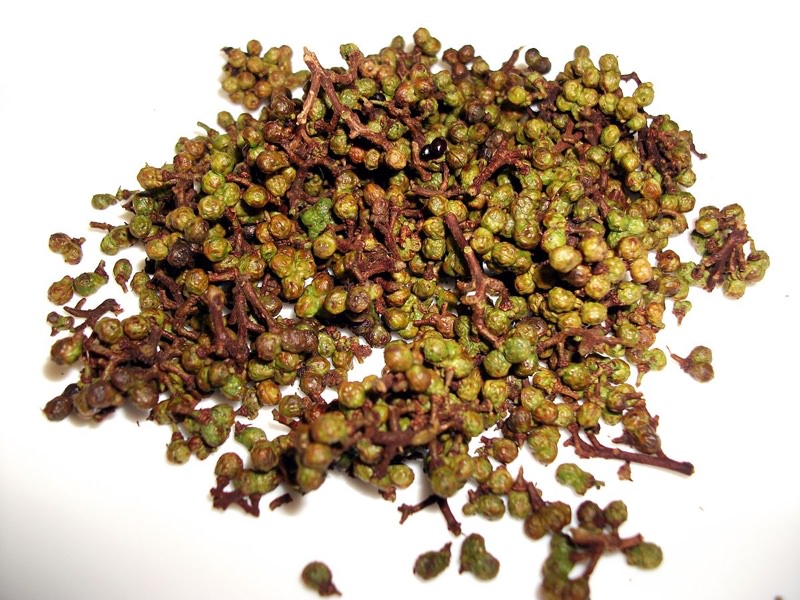
By Jubbuh – Own work, CC BY-SA 3.0, Link
[mf_h2 align=”left” transform=”uppercase”]Szechuan Peppercorn[/mf_h2]
Another liar. Totally unrelated to the peppercorn, this Chinese spice is made from the seedpods of a plant distantly related to citrus. It also tastes nothing like other peppercorns; it’s not at all spicy or peppery, instead creating this bizarre, numb feeling in the mouth. It’s an essential part of classic Szechuan dishes like mapo tofu.
[mf_h2 align=”left” transform=”uppercase”]Unusual Pepper Substitutes[/mf_h2]
The distinctive peppery flavor of peppercorns is not exclusive to the Piper nigrum plant, as the pink peppercorn and long pepper show. You can find it in all kinds of weird places! For example: papaya seeds, the little round black fellows you probably throw out when you cut into a papaya, are edible and have a surprisingly similar flavor to black pepper. (To use, just wash and smash in a mortar and pestle, or wash and allow to air-dry before grinding.)
Several species of the best genus of vegetables, Brassica (which includes broccoli, cabbage, cauliflower, kale, and mustard), have seeds with a pepper-like flavor. Field pepperweed is an invasive plant throughout much of North America, and its seeds are described as having a peppery, mustardy sort of zing. Same with the native Virginia pepperweed, which you’ve probably seen before and not recognized as a noble member of the brassica family.
